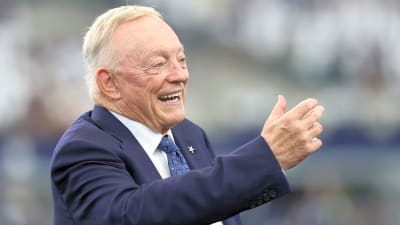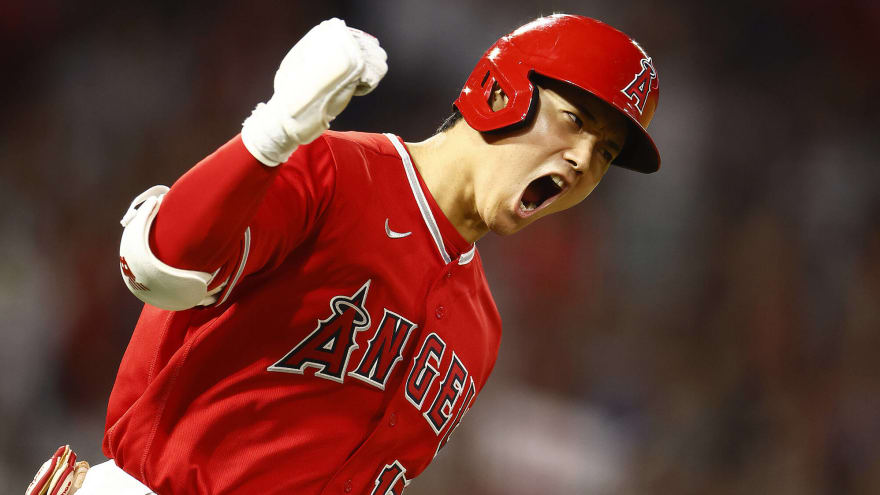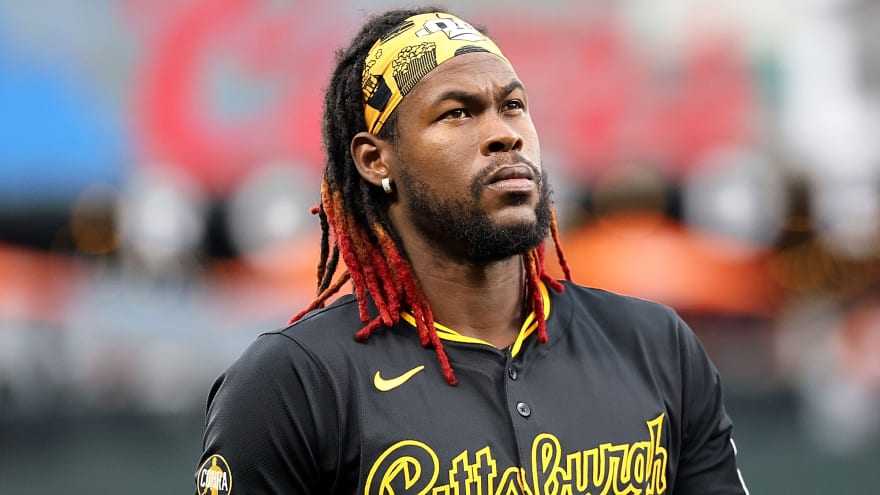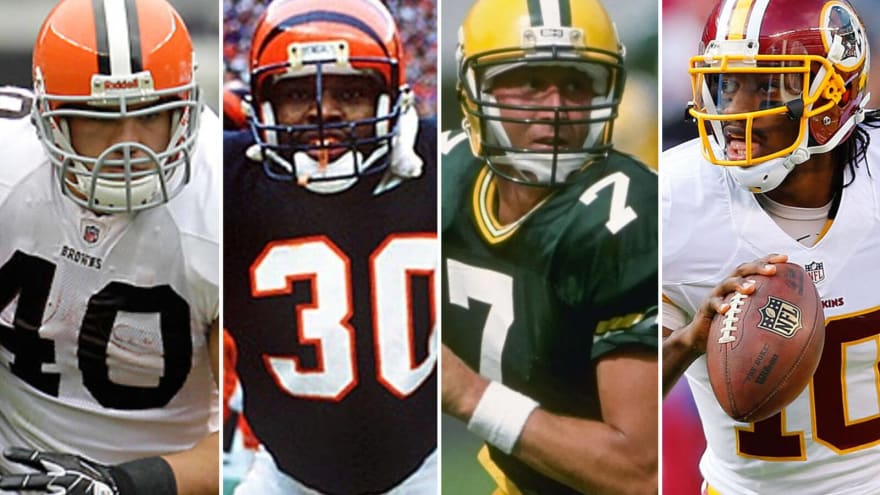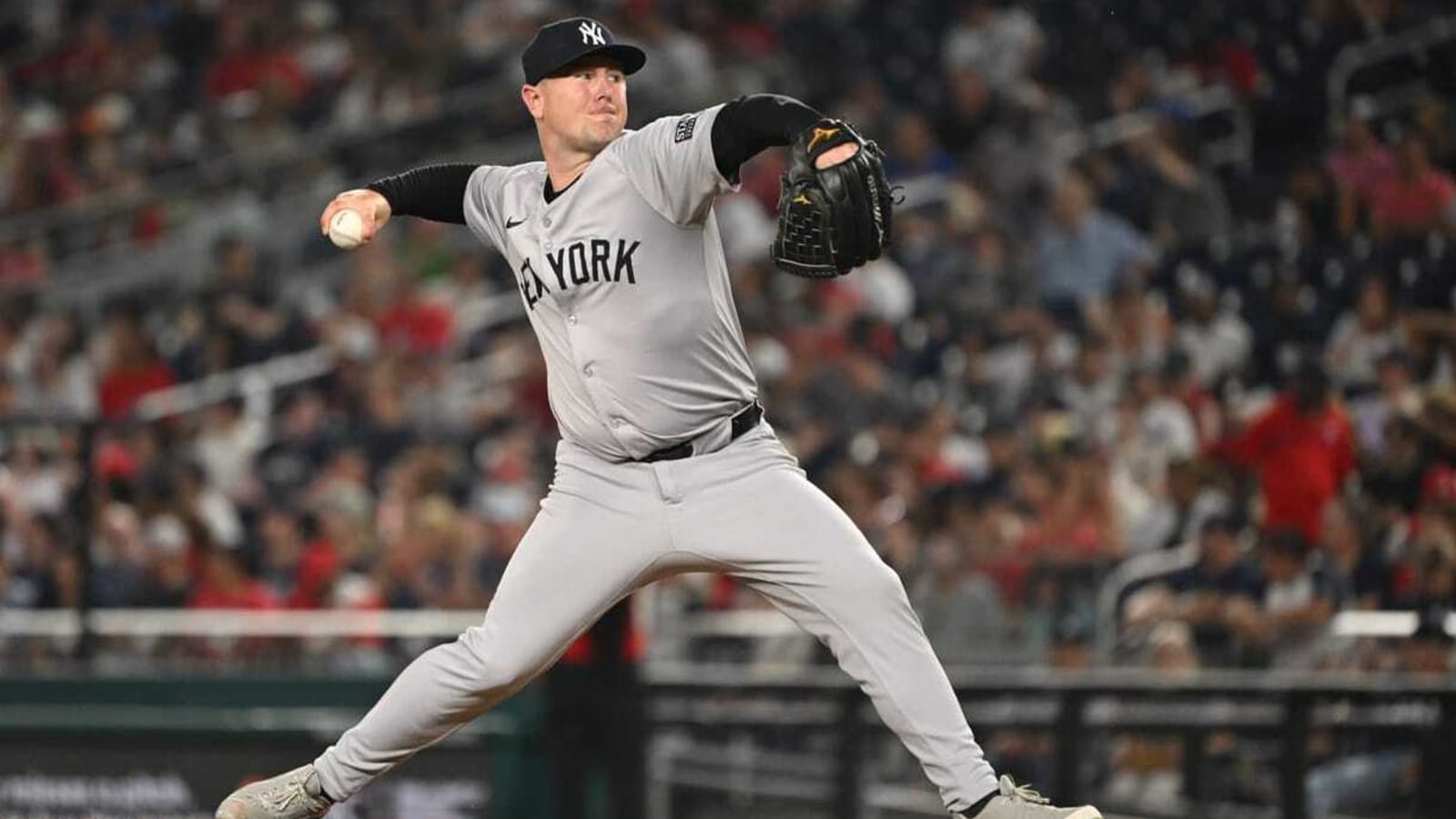
The Yankees are betting on Mark Leiter Jr. to be a major asset in their bullpen this season, and for good reason. Despite some inconsistency in 2024, Leiter has the underlying numbers and pitch arsenal that suggest he could be a key late-inning weapon.
After losing his arbitration case to the Yankees and settling for a $2.05 million salary instead of the $2.5 million he requested, Leiter now has even more motivation to prove his worth.
Underwhelming Regular Season, but a Strong Playoff Performance
Leiter’s 2024 campaign was a mixed bag. Between the Chicago Cubs and Yankees, he logged 58 innings with a 4.50 ERA, but his strikeout numbers were elite, averaging 13.34 strikeouts per nine. While his ERA suggests an up-and-down year, a deeper look reveals he was much better than the surface stats indicate. His expected ERA (xERA) sat at 3.44, meaning he likely ran into some bad luck.

And then came the postseason, where he flipped the switch. Over 5.1 innings, he dominated with a 1.69 ERA, proving he can handle high-pressure situations. The Yankees saw enough to believe that with some minor tweaks, he could be a high-leverage reliever in 2025.
Why the Yankees Like Leiter’s Pitching Profile
There’s a reason Leiter Jr. ended up in pinstripes—he fits exactly what pitching coach Matt Blake wants in a bullpen arm. He ranked in the 96th percentile in chase rate and strikeout rate and was in the 99th percentile in whiff rate. That means hitters have a hard time making contact against him, which is gold for any reliever.
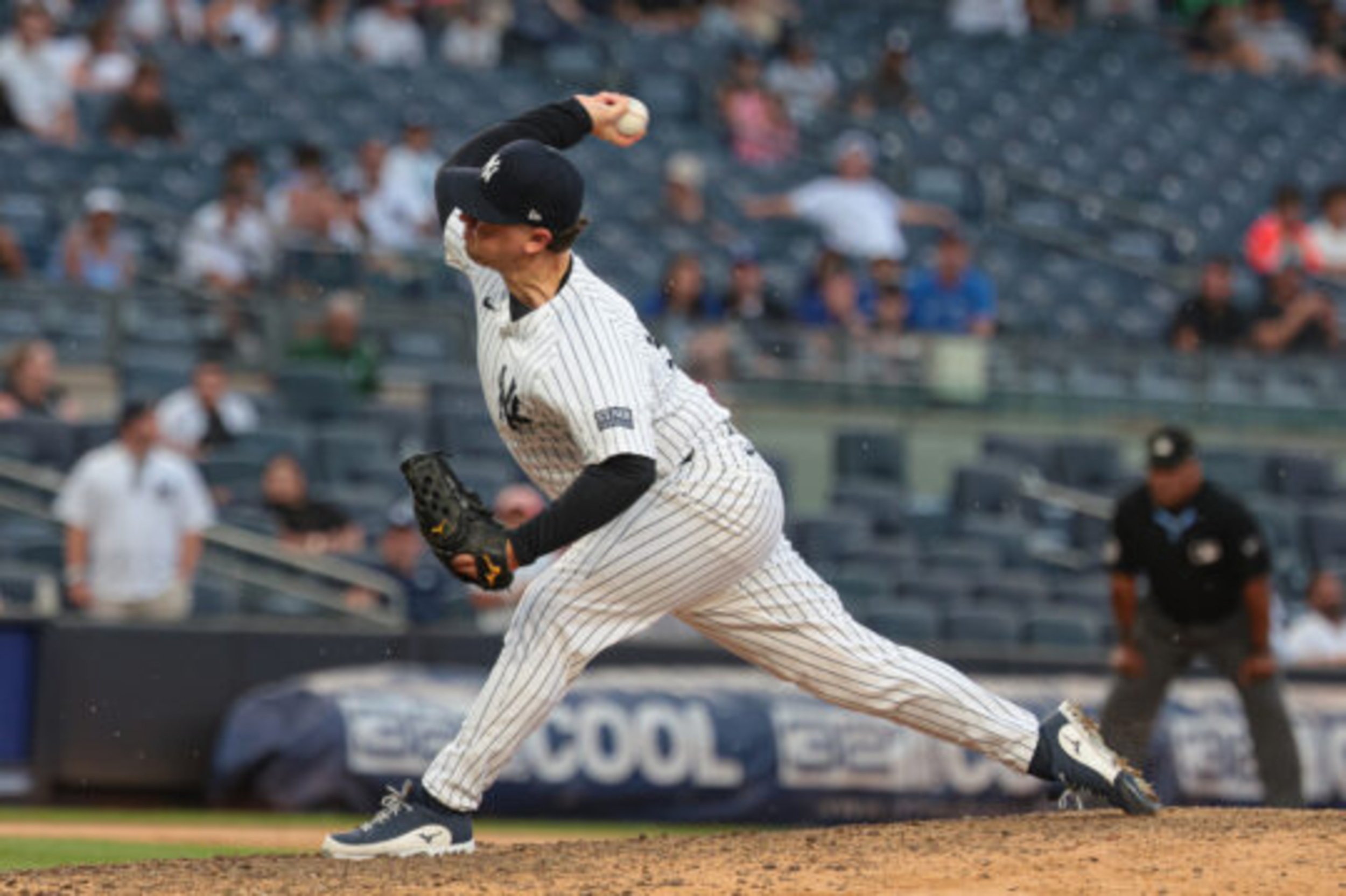
His pitch mix is also intriguing. He primarily relies on a split-finger fastball, sinker, curveball, and sweeper. Last season, he increased his curveball and cutter usage, but his split-finger fastball remained his best pitch, generating weak contact and swings and misses. The Yankees likely see an opportunity to optimize his pitch selection even further.
What to Expect from Leiter in 2025
If Leiter can reduce his occasional command issues and lean into his strengths, he has the potential to be one of the Yankees’ most important relievers. With bullpen depth always a priority, his ability to strike hitters out at a high rate and limit damage late in games could make him an invaluable piece.
The Yankees have control over Leiter until 2027, which means if they can unlock his best version this season, they might have landed a steal. His postseason performance showed what he’s capable of, and with a bit of refinement, he could become one of their most trusted arms in late-game situations.
More must-reads:
- Braves stick to status quo in naming next manager
- Baseball Hall of Fame announces eight names on Era Committee ballot
- The 'World Series single-game K leaders' quiz
Breaking News
Trending News
Customize Your Newsletter
 +
+
Get the latest news and rumors, customized to your favorite sports and teams. Emailed daily. Always free!
TODAY'S BEST

Dream (but realistic) trade targets for every MLB team this offseason
Every MLB offseason brings its share of blockbuster rumors and bold predictions, but some trade ideas actually make sense — for both sides. With free agency about to heat up and front offices reshaping rosters for 2026, Yardbarker MLB writers looked at one dream (but still realistic) trade target for every MLB team. From contenders looking for that final piece to rebuilders seeking a spark, these hypothetical moves blend star power with plausibility. Here’s how all 30 teams could swing a deal that transforms their outlook heading into next season (2025 records in parentheses). AL East Baltimore Orioles (75-87) | LHP Tarik Skubal, Detroit Tigers: The Orioles traded for ace right-hander Corbin Burnes before the 2024 season, and that worked well. Why not try to employ the same strategy with Skubal, an ace in his own right, as Baltimore looks to bounce back from a last-place finish? Skubal’s elite 2.21 ERA in 2025 would be a perfect fit atop the rotation. Boston Red Sox (89-73) | 2B/OF Brendan Donovan, St. Louis Cardinals: It’s unclear whether prospect infielders Kristian Campbell or Marcelo Mayer are the answer up the middle, but there’s no doubt that Donovan would be an established upgrade over both. The 2025 All-Star would bring positional versatility and solid offensive production (.772 career OPS) to a lineup that had trouble scoring at times. New York Yankees (94-68) | 1B/OF Bryce Harper, Philadelphia Phillies: New York could lose outfielders Cody Bellinger and Trent Grisham and first baseman Paul Goldschmidt in free agency, so the Yankees theoretically have both of Harper's positions to fill this winter. The veteran’s left-handed swing is made for the Yankee Stadium right-field short porch, which could help him improve upon a 2025 season in which he produced an .844 OPS, the lowest since his rookie season in 2012. Tampa Bay Rays (77-85) | LHP Mackenzie Gore, Washington Nationals: Typically, the Rays trade pitchers who are young but increasingly expensive (LHP Blake Snell, RHP Tyler Glasnow and RHP Chris Archer). This time, though, it could make sense for Tampa to swing for the fences with Gore, who boasts immense strikeout upside (10.4 K/9 in 2025) and is controllable through the 2028 season. The All-Star southpaw could also thrive in the team's analytics-driven pitching lab. Toronto Blue Jays (94-68) | RHP Joe Ryan, Minnesota Twins: The Blue Jays nearly won the World Series, so they have a lot to look forward to. However, it wouldn’t hurt Toronto to replace members of its oldish rotation with someone like right-hander Ryan, whose 3.42 ERA in 30 starts with the Twins in 2025 should make him one of the top trade candidates of this offseason. — Seth Carlson AL West Athletics (76-86) | Infielder Nolan Gorman, St. Louis Cardinals: The A’s received virtually nothing from second and third in 2025. Former top prospect Zack Gelof should get another chance to prove himself, but the A’s do not have many options at third. Gorman, who hit 27 homers in 2023, may not cost much and could provide a respectable stopgap at the hot corner. Houston Astros (87-75) | IF/OF Brendan Donovan, St. Louis Cardinals: The Astros missed the postseason for the first time since 2016; the outfield was a key factor in that. Astros outfielders posted a .665 OPS, 25th in the majors. Donovan, who has predominantly played at second and left, would solve a black hole in the middle of the lineup and provide a needed left-handed hitter. Los Angeles Angels (72-90) | RHP Brady Singer, Cincinnati Reds: The Angels and Reds line up perfectly as trade partners. The Angels have a logjam in the outfield with either Jo Adell or Taylor Ward expected to be traded during the offseason. Meanwhile, the Reds have plenty of pitching and need help in the outfield. Singer, who has one more year of team control left, would be the most likely Reds pitcher to be dealt. He would solidify the middle of L.A.'s rotation. Seattle Mariners (90-72) | 3B Alec Bohm, Philadelphia Phillies: Because Eugenio Suarez is expected to sign elsewhere in free agency, the Mariners will once again be looking for help at third. Bohm had been on the trading block during the 2024-25 offseason but remained in Philadelphia because no one would meet its price. Bohm hit just 11 homers and 18 doubles in 2025, crushing his trade value. Texas Rangers (81-81) | RHP Mitch Keller, Pittsburgh Pirates: The Rangers should have a solid top of the rotation with Jacob deGrom and Nathan Eovaldi. However, neither pitcher is a paragon of health. Keller has thrown at least 159 innings in each of the past four seasons and is under team control through 2028. He would be a solid middle-of-the-rotation arm. — David Hill AL Central Chicago White Sox (60-102) | 1B Triston Casas, Boston Red Sox: The rebuilding White Sox made progress in 2025 but have many holes remaining. Acquiring a player such as Casas could be a perfect buy-low option while improving the power for a team that ranked 23rd in the majors with 165 homers. Cleveland Guardians (88-74) | RHP Edward Cabrera, Miami Marlins: The Guardians need help in the lineup, but several top prospects are expected to make an impact in 2026. The same cannot be said for the rotation that is lacking a top-of-the-rotation arm. Cabrera finally put everything together for the Marlins in 2025 and is under team control through 2028. Miami has pitching depth, so Cabrera could be available. Detroit Tigers (87-75) | 3B Josh Jung, Texas Rangers: The Tigers need a third baseman and Jung could be the answer. The 2023 All-Star has seen his star dim over the past two seasons as he battled injuries and contact woes. Jung may need a change of scenery and could be what the Tigers need to get his brother, Jace, to tap into his potential. Kansas City Royals (82-80) | OF Jarren Duran, Boston Red Sox: The outfield was one of the worst in the majors in 2025, ranking 29th with a .633 OPS. Duran may not be the player he was in 2024, but his ability to drive the ball into the gaps, excellent speed and stellar defense would be a perfect fit in Kauffman Stadium. Minnesota Twins (70-92) | RHP Jonah Tong, New York Mets: The rotation disappointed in 2025 and sorely needs an ace. The Twins began to dismantle the roster at the 2025 trade deadline, so it's unlikely that pitchers Pablo Lopez or Joe Ryan will be with Minnesota in 2026. Both will be expensive. — David Hill NL West Arizona Diamondbacks (80-82) | RHP Pete Fairbanks, Tampa Bay Rays: The Diamondbacks had issues with the bullpen throughout 2025 (27th in the league with a 4.82 ERA) and it will likely be a point of emphasis for the team this offseason. Fairbanks totaled 27 saves last season and pitched a career-high 60.1 innings. There is a club option for $11 million that the Rays will likely pick up only if they can trade him. At 32, Fairbanks might be worth it for one season in the desert. Colorado Rockies (43-119) | RHP Freddy Peralta, Milwaukee Brewers: It’s a new day in Denver with a new GM coming soon. Colorado desperately needs starting pitching, especially an ace. The Rockies have a crowded outfield in terms of proven players and prospects, so they could work a deal with Milwaukee, a team that they have traded with, and secure a big arm. Los Angeles Dodgers (93-69) | OF Steven Kwan, Cleveland Guardians: After a year in which the Dodgers had to overlook some deficiencies in the outfield with Michael Conforto and Teoscar Hernandez, landing someone like Kwan makes sense for the two-time defending champions. Kwan doesn’t strike out much (only 8.7 percent of the time in 2025), something the Dodgers needed when their offense sputtered in the postseason. San Diego Padres (90-72) | RHP Sandy Alcantara, Miami Marlins: Depending on what happens with pitchers Michael King and Dylan Cease, the Padres are going to need someone who can step in as a face of the rotation. Alcantara, 30, has a $19 million deal for 2026 and a $21 million team option for 2027, so he won’t come to San Diego cheap. However, the NL West will be another arms race in 2026, and Alcantara could be a fascinating addition for the Padres. San Francisco Giants (81-81) | LHP JoJo Romero, St. Louis Cardinals: Adding a solid southpaw to the bullpen is rarely a bad move, and the 29-year-old Romero has been quietly building a reputation as one of the best lefties in the late innings. He’s controlled through arbitration through the 2026 campaign and has logged 57 holds over the past three seasons. Pitching is expected to be a priority for the Giants this offseason. — Kevin Henry NL East Atlanta Braves (76-86) | SS Jeremy Pena, Houston Astros: The former World Series MVP was drafted by the Braves out of high school in 2015 but chose not to sign. Perhaps a reunion is in order in Atlanta, which has desperately needed a true shortstop since the departure of Dansby Swanson during the 2022 offseason. The 28-year-old Pena was named an All-Star in 2025, batting .304 with 17 home runs and 62 RBI in 125 games. Miami Marlins (79-83) | 1B/OF Alec Burleson, St. Louis Cardinals: Miami exceeded expectations in 2025 and, if they have a strong offseason, could be a sleeper contender for an NL wild-card spot in 2026. Before that happens, though, they must solve their first base conundrum by trading for Burleson, who can play there and in the outfield. Burleson, who will turn 27 on Nov. 25, posted a career-high .801 OPS with 18 homers and 69 RBI in 2025. New York Mets (83-79) | LHP Tarik Skubal, Detroit Tigers: Skubal, in line for his second straight AL Cy Young Award, would be a dream trade candidate for any team but especially owner Steve Cohen and the Mets. New York desperately needs a frontline starter after its pitching largely failed it in 2025. Philadelphia Phillies (96-66) | C Adley Rutschman, Baltimore Orioles: Longtime catcher J.T. Realmuto is a free agent and, despite entering his age-35 season in 2026, is expected to be a hot commodity on the open market. It’s clear the Phillies must get younger at the position, and acquiring the former No. 1 overall pick from Baltimore would be a solid way to secure their future at backstop and keep their competitive window open. Rutschman, who will turn 28 on Feb. 6, hasn't lived up to his draft pedigree but still has decent upside. Washington Nationals (66-96) | RHP Jonah Tong, New York Mets: The Nationals are more than one piece from being competitive, so Washington’s focus should be who they can acquire in potential trades for left-hander MacKenzie Gore, 2B Luis Garcia Jr. and OF Robert Hassell III. Bleacher Report’s Kerry Miller proposed a wild divisional trade that would send Tong to the Nationals for Gore. — Lauren Amour NL Central Chicago Cubs (92-70) | RHP Shane Bieber, Toronto Blue Jays: Chicago leaned heavily on veteran arms in its rotation, with 34-year-old Matthew Boyd anchoring the staff. Bieber, 30, joined the Blue Jays this season, posting a 4-2 record with a 3.57 ERA and 1.017 WHIP. With Chicago expected to be a playoff-level team in 2026, Bieber could be another experienced arm to help with a deep postseason run. Cincinnati Reds (83-79) | LHP JoJo Romero, St. Louis Cardinals: The Reds need reliable back-end bullpen arms, and Romero offers late-inning experience. He became the Cardinals’ closer after the team dealt Ryan Helsley to the New York Mets. In 2025, Romero posted a 2.07 ERA, a career best in the big leagues, in 61 innings. Milwaukee Brewers (97-65) | 1B Pete Alonso, New York Mets: Milwaukee's lineup struggled to produce consistent power in 2025, finishing 22nd in MLB with 166 home runs. Alonso, who launched 38 home runs — leading all first basemen — would be an immediate upgrade. He also hit .272 and drove in 126 runs, the second most in the majors. Andrew Vaughn filled the role well after being traded to Milwaukee midseason, but Alonso would be the definitive No. 1 option. Pittsburgh Pirates (71-91) | 2B Brandon Lowe, Tampa Bay Rays: The Pirates haven’t made much of a trade splash in recent offseasons, so dealing for a proven bat like Lowe would be smart. He hit .256 with 31 home runs in 2025, bringing power and veteran experience to a younger lineup. St. Louis Cardinals (78-84) | RHP Dylan Cease, San Diego Padres: The pitching staff lacked swing-and-miss stuff in 2025, finishing 29th in MLB in strikeouts. Cease delivered 215 strikeouts over 168 innings — sixth most in MLB — and led the majors with 11.52 strikeouts per nine innings. — Taylor Bretl

Matt LaFleur spills the beans on what the Packers really plan to do ahead of the NFL trade deadline
The Green Bay Packers don't tend to be the most active team ahead of trade deadlines. Since general manager Brian Gutekunst took over in 2018, he's never acquired a player in the week leading up to the deadline — on the other hand, he's sold Ha Ha Clinton-Dix, Ty Montgomery, Rasul Douglas, and Preston Smith. However, Gutekunst did consider some trades — most notably, wide receiver Will Fuller back in 2020. Ultimately, the price requested by the Houston Texans wasn't right. This is mostly how the Packers will process things ahead of Tuesday's deadline. The roster is good enough The Packers already made two trades right before the season, acquiring Micah Parsons and Darian Kinnard. Asked about potential moves on Monday, head coach Matt LaFleur mentioned that the team doesn't need to add more players to be competitive, but the front office is making sure to evaluate opportunities. "I don't think so, not necessarily," LaFleur said about the need to add pieces. "I know Gutey and the rest of the guys upstairs are doing a great job of looking for things that could potentially help us, and if the right decision is there, I’ve got full confidence he’ll make it." Gutekunst and LaFleur have a close relationship, and the big roster decisions go through both of them, even though the GM has the final call. "We're in constant communication about everything," LaFleur added. While cornerback and defensive tackle were arguably the biggest needs on the roster, the tight end room also became thin with Tucker Kraft's season-ending knee injury. Right now, the only two TEs on the roster are Luke Musgrave and John FitzPatrick — Josh Whyle is on the practice squad and could be promoted or elevated. The trade deadline is at 3 p.m. (CT) on Tuesday, Nov. 4. Don't expect big moves from the Packers, but something might happen — and as always, only if the price is right. This article was originally published on A to Z Sports Green Bay, as "Matt LaFleur spills the beans on what the Packers really plan to do ahead of the NFL trade deadline."

Dolphins' Mike McDaniel Reveals Tua Tagovailoa Decision Before Bills Game
Through nine weeks of the NFL season, the Miami Dolphins have been one of the worst teams in the league. Following the team's 28-6 Week 9 loss to the Baltimore Ravens on Thursday night, the Dolphins have fallen to 2-7 on the year, and have seemingly already laid the groundwork for a total rebuild. One day after the loss, the Dolphins announced that they had fired general manager Chris Grier. A change in power at the GM role indicates that no one on the roster is safe moving forward, as whoever is brought in will have ties or allegiances with the current regime. One person who many believed could be at risk of losing his job is quarterback Tua Tagovailoa. The Pro Bowl quarterback has been a shell of his former self this season, throwing for 1,779 yards with 15 touchdowns and 11 picks through nine games. For reference, Tagovailoa's previous career high in interceptions came in 2023, when he threw 14 in 17 games. Head coach Mike McDaniel benched Tagovailoa in the team's Oct. 19 loss to the Cleveland Browns after he threw three interceptions and lost a fumble, turning to rookie quarterback Quinn Ewers. While calls have been growing again for Tagovailoa to be sent to the bench once and for all, McDaniel confirmed that he's not entertaining that idea at this time. When speaking to the media on Monday ahead of the team's Week 10 game against the Buffalo Bills (6-2), McDaniels confirmed he is not anywhere close to making that decision at this time. "I am far from even going down that direction of would've, could've possible things," McDaniel said. "We have a football game against the Buffalo Bills that we are certain that Tua gives us the best chance to win and we have to approach our jobs with diligence. We have to execute and Tua knows that heavy is crown that of being a franchise quarterback." According to ESPN BET, the Bills have opened as 8.5-point favorites. While Miami looks to stay afloat on the season, the Bills are coming off of a monster win over Patrick Mahomes and the Kansas City Chiefs, as they look to make a Super Bowl run this season. As for the Dolphins, they haven't beaten the Bills since 2022, and are 1-9 against them in their last 10. Tagovailoa has been far from spectacular this season, but is clearly being given some grace by McDaniel. With that being said, the Dolphins have a bye in a couple of weeks, and it does cause one to wonder if that is when the Dolphins would end up benching the former Alabama star if things don't turn around.

Canadiens Player Sends Clear Message After Senators Targeted Ivan Demidov
Montreal Canadiens defenseman Jayden Struble didn’t hesitate when Ottawa Senators forward Nick Cousins came back through Bell Centre on Saturday night. Weeks after Cousins’ preseason slash on Canadiens rookie Ivan Demidov, Struble delivered his own message during Montreal’s 4–3 overtime win. The Habs defenseman dropped the gloves with 18 minutes, 45 seconds left to play in the third period and the game tied at 2, settling a feud that lingered since training camp. “When you have a guy like that taking a shot at your star young player, that was a bad play,” Struble said. “None of us liked it. We were thinking about it. This is the first time we played him since. That’s on our minds. You can’t go around trying to hurt our best players.” Cousins spent most of the night trying to avoid both Struble and Montreal’s usual enforcer, Arber Xhekaj, before finally being caught after two full periods. The fight was brief but decisive, ending with Cousins bloodied and leaving the game. Struble, 24, said there was no personal vendetta, just a need to hold opponents accountable for their actions, even more in preseason exhibitions. Back in October, the NHL fined Cousins $2,148.44, the maximum allowable under the collective bargaining agreement. Cousins was only assessed a minor penalty for slashing during that preseason matchup. Struble made it clear on Saturday that Montreal won’t forget when a player crosses the line, saying, “We’ll protect our guys. That’s how it should be.” For the Canadiens, the moment carried meaning beyond retaliation. Demidov, the target of Cousins' slash in September, tied the game late in regulation before Alex Newhook sealed the win in overtime. The Canadiens and the Senators will meet three more times this season, the next matchup scheduled for Dec. 2 once again in Montreal.


